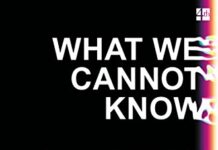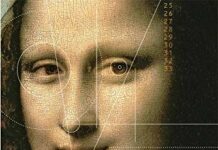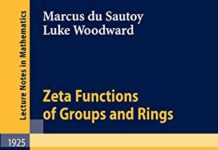
Ebook Info
- Published: 2012
- Number of pages: 335 pages
- Format: PDF
- File Size: 1.89 MB
- Authors: Marcus du Sautoy
Description
Inthe tradition of Fermat’s Enigma and Pi, Marcus du Sautoy tells the illuminating, authoritative, and engagingstory of Bernhard Reimann and the ongoing quest tocapture the holy grail of mathematics—the formula to predict prime numbers.Oliver Sacks, author of The Man Who Mistook His Wife for a Hat, calls TheMusic of the Primes “an amazing book. . . . I could not put it down once Ihad started.” Simon Winchester, author of The Professor and the Madman,writes, “this fascinating account, decoding the inscrutable language of themathematical priesthood, is written like the purest poetry. Marcus du Sautoy’s enthusiasm shines through every line of this hymnto the joy of high intelligence, illuminating as it does so even the darkestcorners of his most arcane universe.”
User’s Reviews
Editorial Reviews: Review “An amazing book! Hugely enjoyable. Du Sautoy provides a stunning journey into the wonderful world of primes.” — Oliver Sacks“This fascinating account, decoding the inscrutable language of the mathematical priesthood, is written like the purest poetry.” — Simon Winchester, author of The Professor and the Madman“This is a wonderful book about one of the greatest remaining mysteries in mathematics.” — Amir Aczel, author of Fermat’s Last Theorem and The Riddle of the Compass“No matter what your mathematical IQ, you will enjoy reading The Music of the Primes.” — Keith Devlin, Stanford University, author of The Millennium Problems: The Seven Greatest Unsolved Mathematical Puzzles of Our Time“Exceptional. … A book that will draw readers normally indifferent to the subject deep into the adventure of mathematics.” — Booklist (starred review)“[A] lively history. . . . A must for math buffs.” — Kirkus Reviews“Fascinating.” — Washington Post Book World From the Back Cover In 1859, German mathematician Bernhard Riemann presented a paper to the Berlin Academy that would forever change mathematics. The subject was the mystery of prime numbers. At the heart of the presentation was an idea that Riemann had not yet proved—one that baffles mathematicians to this day.Solving the Riemann Hypothesis could change the way we do business, since prime numbers are the lynchpin for security in banking and e-commerce. It would also have a profound impact on the cutting edge of science, affecting quantum mechanics, chaos theory, and the future of computing. Leaders in math and science are trying to crack the elusive code, and a prize of $1 million has been offered to the winner. In this engaging book, Marcus du Sautoy reveals the extraordinary history behind the holy grail of mathematics and the ongoing quest to capture it. About the Author Marcus du Sautoy is a professor of mathematics and the Simonyi Professor for the Public Understanding of Science at Oxford University. He is a frequent contributor on mathematics to The Times, The Guardian, and the BBC, and he lives in London. Read more
Reviews from Amazon users which were colected at the time this book was published on the website:
⭐This book “tells a story of eccentric and brilliant men” who have investigated the Riemann hypothesis and related matters, and tells it fairly well. If it were solely about the mathematicians, I might well have given four stars; I know very little independent information about them with which to check the author’s story.But it tries to tell the story of the mathematics as well, though perhaps half-heartedly, and does not succeed at all well. Such recurring metaphors as “Nature has picked the primes” seem rather strange to me, but there are quotations from other mathematicians that appear to state an opposing view.It is not especially well written. It is written in British rather than American English, which is perfectly all right in itself, and possibly accounts for “protest at” where “protest” would suffice. Such analogies as “ley lines” might fly better overseas. But “explanations for natural phenomenon” doesn’t work anywhere. In one sentence he writes of “irrational numbers” and “numbers with a non-repeating decimal expansion” as if they were different entities. Earlier he hazily defines irrational numbers without using the word “ratio”, allowing the questionable assertion “the name reflected mathematicians’ sense of unease”. At one point he writes “N and N+1 cannot both be prime … because at least one of these numbers is divisible by 2”; of course, exactly one is divisible by 2. Although the seventh graders I have worked with are familiar with such terms as “integer” and “modulus”, he muddies many a description by refusing to use them and many similar widely understood terms. Although the term “factorise” (British for the verb “factor”) is used, he can still write such cumbersome lines as “the fast way to crack numbers into the primes from which they are built” when he means simply “the fast way to factorise”.He describes the Ishango bone: “Marked on it are three columns of four notches. In one of the columns we find 11, 13, 17 and 19 notches….” How did four notches change? An appendix at least gives a website where the bone can be viewed. The same appendix gives the author’s own website, which appears to be inoperative.While it may be hopeless to explain all the math in the book, the author could have done more. He states Hilbert’s seventh problem, and later states that it was solved, but does not say when, by whom, or even whether the answer was yes or no. On page 200 he gives a fascinating formula in 26 variables which generates all primes but no other positive number, but fails to state what values the variables can take (presumably non-negative integers). He adds, “some choices … give a negative answer, and we just have to ignore them”; from what I can see, the googol non-negative choices for these variables with lowest sum will generate painfully few primes, so his comment is startlingly understated. Nonetheless, it was nice to see such a formula in print; it hadn’t even been discovered when I got a degree in math many years ago. Possibly non-mathematicians will find this book’s shortcomings less annoying than I have, and as a retired mathematician I certainly enjoyed such lines as “a trance is in fact very close to the state of mind that most mathematicians try to achieve”.
⭐This is a fantastic history book on the efforts of some of the greatest mathematical (and physicist’s )minds from Gauss and Riemann to Selberg and Alain Connes in their efforts to crack one of the most beautiful problems: the distribution of prime numbers.Some of the greatest insights in mathematics and in science are when somebody makes an unexpected link between two different areas. This is what the genius of Riemann suggested connecting the prime numbers to the zeroes of a function of complex variable. The conjectured location of the zeroes of this function, the Riemann Hypothesis, is the only unsolved problems of Hilbert’s list and has become, with all the honours, one of the Millenium problems, worth one million dollars, but that is nothing compared to the instant glory acquired by whoever can solve it.Unlike the other famous problem, Fermat’s Last Theorem, many theorems depend on the Hypothesis.The book reads like a thriller and indeed some of the anecdotes are those of thriller, like the mysteries still contained in the remaining unpublished papers of Riemann, the Nachlass, and the disappearance of one of his notebooks and the destruction of a large number of his notes by his housekeeper. Another example is André Weil being accused of espionage in Finland for writing mathematical letters to Russian colleagues, being condemned to death and being spared of the death sentence by a chance dinner of the Police Chief with Nevalinna (a Finish mathematician) the night before the execution.Billions of zeroes are known to be in the critical line and even we know that a high percentage are there, but we cannot prove with absolute certainty that they are all there. And, as Littlewood, showed, great empirical evidence is not a guarantee of mathematical certainty.It was interesting to learn that there is a formula that outputs (when the value is positive) all primes and only primes.This is a highly recommended book for all people interested in mathematics, although some college level of this subject will make it easier to digest.
⭐This book is great in tracking the history of the Riemann hypothesis, the Mathematicians who approached it, and related issues.However personally I wanted to understand more about the math behind the Riemann hypothesis, but it seems this book is not intended for this.Overall it was a nice book to read.
⭐A delightful dip into the world of math
⭐A brilliant summary regarding prime numbers, with the best explanation in general terms of the Riemann Hypothesis and its implications that I have yet come across. The many biographical inclusions of pioneering mathematicians makes for added interest, and extends to computing and cryptography, finally embracing quantum chaos. First published in 2003, this is still a very modern book by Marcus du Sautoy, and at Amazon;s price of just $10.17 US, why wouldn’t you include it in your library? A great read.
⭐Great book for its exact way of describing the progress in mathematics. The zeta of Riemann born as statistical interpretation of number of primes in an interval. In 1800 many mathematical researchers follow this position, trying to show it, particularly Gauss and Hilbert. But a true proof looks like very difficult to find. In 1900 this proof is tried at computer as for the theorem of 4-colours, but without important results. Finally in last years Connes has used those questions for the problem of the renormalizzazion of the quantum space. That produces the translation of the concepts from geometry to algebra.
⭐I bought this for my mathematician son-in-law a year or so ago, and borrowed it to read last week. It’s a brisk description of efforts made by mathematicians to understand the way in which the prime numbers (2, 3, 5, 7, 11, 13…) are distributed. This problem was originally looked at by Euclid (who proved there were infinitely many primes), but work on how they’re distributed started with Gauss, who suggested the formula N/log(N) for their asymptotic distribution. This led onto Riemann’s investigation using his zeta function, and his hypothesis (that the real part of all non-trivial zeros of the zeta function is 1/2). There’s a deep connection between the hypothesis and the distribution of primes, but – so far – the hypothesis has resisted all attempts to prove it.There’s a cavalcade of mathematicians featured in this book: from Gauss and Riemann through Hilbert, Hardy, Littlewood, Ramanujan, Erdos and Turing to Jon Keating (whom I heard speak about proving the Riemann hypothesis at a conference in Sydney around twenty years ago). The author does a good job of explaining the mathematics and the way in which each discovery builds on previous work to move the subject forward: he describes this memorably as a “mathematical relay race” [p102]. He also makes the link between pure research in prime numbers and commercial applications such as encryption. Thus, there’s a lengthy digression on the RSA cryptosystem, which relies on the difficulty of of factoring the product of two large prime numbers – this would be made much easier if the distribution of primes was known.I enjoyed reading this book. Of course, the explanation of the mathematics has had to be simplified for the lay reader, but the author uses some nice analogies (“sea level” for the Riemann zeros, for example) which convey much of the sense, and is good on the personalities and interactions of the people working in this most abstruse of fields. Recommended.
⭐If you like numbers, maths and learning do try this, but beware it made me reach for my laptop and creat a new benchmark. 8 mins 40 secs to run this code.Sub TopLevel()PrimeCount = 2Sheets(“primes”).SelectFor Count = 3 To 100003 Step 2 IsPrime = 0 For i = 3 To Count If Int(Count / i) = Count / i Then IsPrime = IsPrime + 1 End If If IsPrime > 1 Then i = Count Next iIf IsPrime = 1 Then Cells(PrimeCount, 1) = Count PrimeCount = PrimeCount + 1End IfNext CountCells(1, 3) = PrimeCountEnd SubApologies but – then you can play with primes between 2 and 100000
⭐I like Marcus Du Sautoy, and he is lovely to listen to him gush about mathematics. I share his joy, but not his depth of understanding.My rating is purely about the typesetting in this paperback edition. It is far, far too small. The pages of the book havr been shrunk down to fit on a smaller format, without resetting the type. It’s lazy, as soon as I opened it up and saw it I immediately returned the book. Sorry, I refuse to pay and renumerate publishers for this sort of thing, it is grotesque.
⭐I really enjoyed reading this book. It tells the story of the Riemann Hypothesis, a conjecture that helps to explain the distribution of prime numbers, one of the greatest puzzles in mathematics. But, the Riemann Hypothesis remains unproven. In fact, it is the most famous unproven hypothesis in mathematics.This not a maths textbook and you don’t need to be a mathematician to enjoy the it, although you may have to accept some details without question. But it is so well written and it tells a compelling story that is populated by fascinating characters and some of the most brilliant minds of modern science. Many things that we take for granted and which are embedded in modern life are connected with the crux of this story.
⭐I’ve previously read this book in paperback format, but as I creak down the hill of years, adiposity and presbyopia, I found that I needed the ease of reading of my Kindle. I enjoyed it every bit as mch as on previous readings and I truthfully understood every word – for the forst time, dspite my advancing years! Of course this has nothing to do with the fact that Marcus du Sautoy is a terrfic writer – does it? While I’m on the subject, I can highly recommend Chaos by James Glieck. Give it a go!
Keywords
Free Download The Music of the Primes: Searching to Solve the Greatest Mystery in Mathematics in PDF format
The Music of the Primes: Searching to Solve the Greatest Mystery in Mathematics PDF Free Download
Download The Music of the Primes: Searching to Solve the Greatest Mystery in Mathematics 2012 PDF Free
The Music of the Primes: Searching to Solve the Greatest Mystery in Mathematics 2012 PDF Free Download
Download The Music of the Primes: Searching to Solve the Greatest Mystery in Mathematics PDF
Free Download Ebook The Music of the Primes: Searching to Solve the Greatest Mystery in Mathematics



